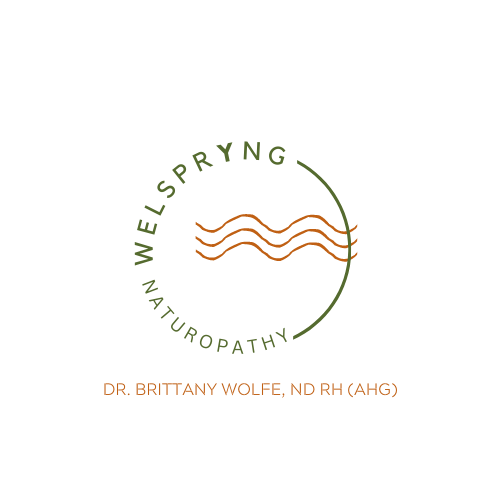spring clean your personal care routine
When the change of season finally hits in the prairies, we begin spring cleaning our homes; dusting, re-arranging, clearing out old items and making space for what is to come. Often times, we tend to forget that our physical body could also benefit from a little dusting as well. Dr. Julie Zepp wrote about the importance of spring cleaning the physical body in the previous post. For this blog post, I would like to share some of my tips for “green-ifying” your personal environment. Why is this even necessary, you ask? Many of the products – both cleaning products and personal care products – contain toxins known as xenobiotics. These are molecules that are foreign to the body and, generally speaking, our intelligent body knows exactly how to process them and excrete them. However, if your innate detoxification is running a little slower these days, xenobiotic exposure can begin to take a toll on the body. Some examples of well-known xenobiotics include bisphenol A (AKA BPA), phthalates and dioxins. If you are interested in swapping out some of your usual go-to products for home and body for greener solutions that are still effective, read on!
PERSONAL CARE PRODUCTS
If you are perusing the ingredient list of your favourite products and there are words that are new to you, this is a great opportunity to familiarize yourself with the products that you use daily. Environmental Working Group has an excellent database called Skin Deep where you can begin to learn more about commonly used ingredients and their impact on the body. A word of particular caution would be around the ingredient “fragrance” or “parfum” as companies are not obligated to list the separate ingredients that add scent to their product; instead they can use the catch-all phrase fragrance. The International Fragrance Association (IFRA) lists 3,059 materials that are reported as being used in fragrance compounds. Meaning, that a product could contain one or two ingredients to create the scent or it could contain 80 to 100.
I often joke that I have a PhD in green beauty. Although, truthfully, it is not much a joke; if it has a green beauty designation, I have likely tried it. Below are some of the products that I consistently come back to because they are effective, accessible and a fair price.
Schmidts Natural Deodorant
Thayers Witch Hazel
Menstrual care products: Joni, Veeda (found at London Drugs), a menstrual cup
PRODUCTS FOR THE HOME
Although I have been making my own cleaning solutions for years, I really had to kick it up a notch when I found myself moving during a pandemic. Knowing that I had a rather large cleaning day coming my way, I masked up and went to the local store. The cleaning aisle was desolate. All that remained was vinegar, distilled water, Dr. Bronner’s Castile soap and a few essential oils. Against all odds, that sweet little home of mine was spotless when it was all said and done. Here are some of my top tips and recipes:
All Purpose Cleaner #1
1 tbsp castile soap of choice
1 cup distilled water
Add essential oils of choice – my usual is rosemary (5 drops), peppermint (10 drops) and lavender (10 drops)
Tip: Add the water first and the castile second so that you don’t make too many bubbles!
All Purpose Cleaner #2
20% vinegar
80% distilled water
Add essential oils of choice
Scum cleaner
20% vinegar
80% distilled water
5 drops dish soap (I use Seventh Generation)
Method:
Spray liberally on the surface
Let it sit for 15 minutes (this is key!)
Get yourself a nice scrubbing tool (a toothbrush is not strong enough here)
Scrub, scrub, scrub
Rinse
Dry with a cloth
General sink cleaner – Spray a vinegar-based cleaner in the sink, sprinkle with some baking soda and then take half a lemon (squeeze the contents into a glass of water and drink it because it is delicious) and then scrub. Works like a charm and produces very little waste!
Eco tip: Replace paper towels with some reusable cleaning cloths
Also feel free to swap out some of your scented candles with some natural air purifiers such as:
Beeswax candles
Plants
Salt lamps
A WORD ON HORMONES
Many cosmetics, cleaning products and body care products contain endocrine disruptors. These are molecules that mimic our hormones very closely; in fact, the body cannot tell the difference between the two. Unfortunately, their effect on the body is a lot more potent than our own endogenous hormones which can be quite detrimental for the body. The most commonly referenced endocrine disruptor is a group of xenobiotics known as xenoestrogens. You can read more about xenoestrogens here. Limiting their use is of most importance for folx who are trying to be mindful of their estrogen exposures.
Some tips:
Swap out your plastic storage containers for glass
Invest in a glass or stainless steel water bottle
Find some mineral makeup that you enjoy – My favourite is Canadian-owned, woman-run Pure Anada Cosmetics.
If you are feeling rather doom and gloom about the products in your cupboard right now, rest assured that these exposures are simply a drop in the bucket. Single-handedly, they will not harm you. However, consistent exposure to xenobiotics paired with sluggish hepatic detoxification can begin to have a larger effect on the body. The intention is not to spark fear but rather to spark small changes. The next time that you need to replace a product, perhaps you reach for a green alternative or play around with making your own. Taking care of your body can be creative and fun!
